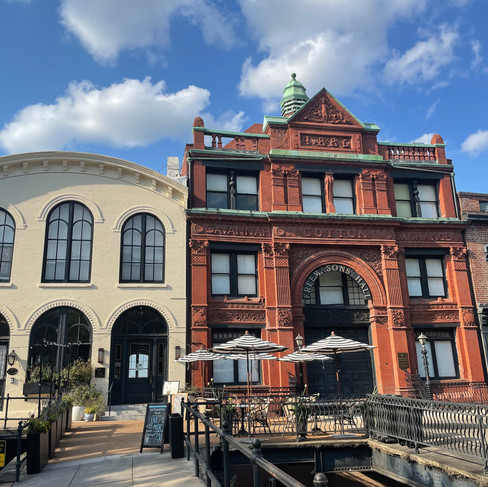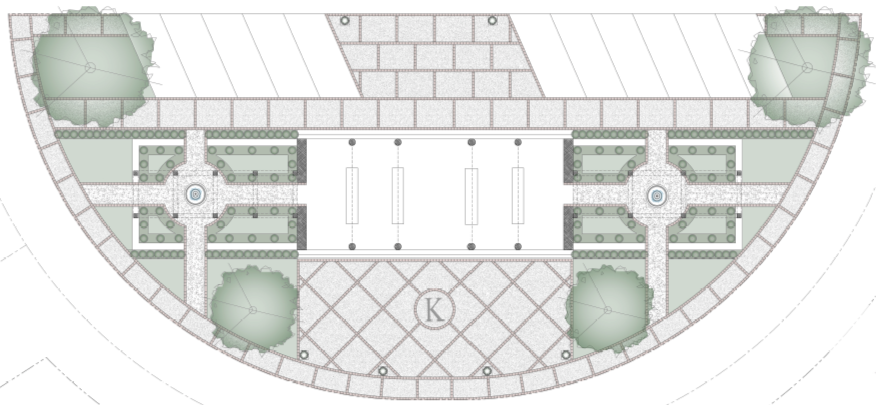Why is Civic Architecture Important?
- browndesignstudio
- Jun 11
- 3 min read
In the past, civic architecture was used to showcase power, cultural values, and wealth. Now, it serves as a part of history as well as an important aspect in designing public spaces. When designing new developments many designers neglect to include civic architecture into their planning. By doing so they fall short when it comes to creating spaces that foster thriving communities. Not only does civic architecture greatly impact neighborhoods but it also impacts peoples overall well being. Whether it is a civic monument or civic building it encourages interactions between residents and interactions with the spaces that have been created for this exact purpose. Making it a priority to design public spaces in a more thoughtful manner will benefit the community and society as a whole.

Leon Krier touches on this subject with his Res Publica Res Economica Civitas ideogram. In this diagram you are able to see the public buildings and monuments by themselves as well as the streets and public spaces; then what it looks like when they are put together and how it creates “The True City”. Savannah, GA as well as Florence, London, and Paris are cities that accurately exemplify the concept Leon Krier depicts in his ideogram. With a combination of the private realm as well as public squares, parks, civic buildings and monuments you get a flourishing city with residents and visitors from around the world. Proper urban planning should include these concepts in their designs as they are what will bring together a segregated city.
Civic Buildings and Monuments in Savannah, GA
Jane Jacobs in her novel The Life and Death of Great American Cities touches on ideas and concepts similar to those of Leon Krier. She argues that segregating cities into different categories leads to dull neighborhoods. By focusing on diversity of building types one can achieve an ideal city that includes thriving communities, social interactions, improved walkability, and much more. Many people disliked the ideas Jacobs had written about as she opposed those who wanted to create dull monotonous cities that lacked culture and diversity.
When examining these urban planning concepts it is evident that the foundation to a successful community is by ensuring they include both the private and public realm. By applying them to smaller scale towns and new developments you are creating and fostering communities, not just building hundreds of houses where nobody knows their neighbors. Take Habersham, SC for example, this town integrates civic spaces with lowcountry living allowing for a balance of private vs public. Residing in a neighborhood where you can walk to the post office and then an event in the park with your neighbors is something people are drawn to. People want to be around people; the best way one can create a community where this occurs is by taking the time to plan how civic architecture can be incorporated into these kinds of neighborhoods.
Public vs Private - Habersham, SC
A project we are currently working on, called Kane Island in Beaufort, South Carolina, is another prime example of the importance of civic architecture. Throughout the initial phases, it was important for us to start thinking of ways to incorporate civic structures into the development. Similar to Habesham, we began to develop a community mail building that could also serve as a pavilion for live music or gatherings. Another study we looked at were follies, posts, gates, and other forms that would create an entry sequence; guiding people and giving them a sense of arrival. Although these structures may seem secondary or minor in comparison to the overall project, they are crucial to placemaking.
Civic Architecture Concepts - Kane Island, Beaufort, SC
Civic architecture is far more than a display of power or a historic symbol, it is what helps to connect a community. As we continue to develop new neighborhoods it is crucial that we include civic architecture throughout the design process to form places where people are able to connect with others. By doing so, we provide the foundation for diverse, functional, and safe communities that make people feel welcome.























Comentários